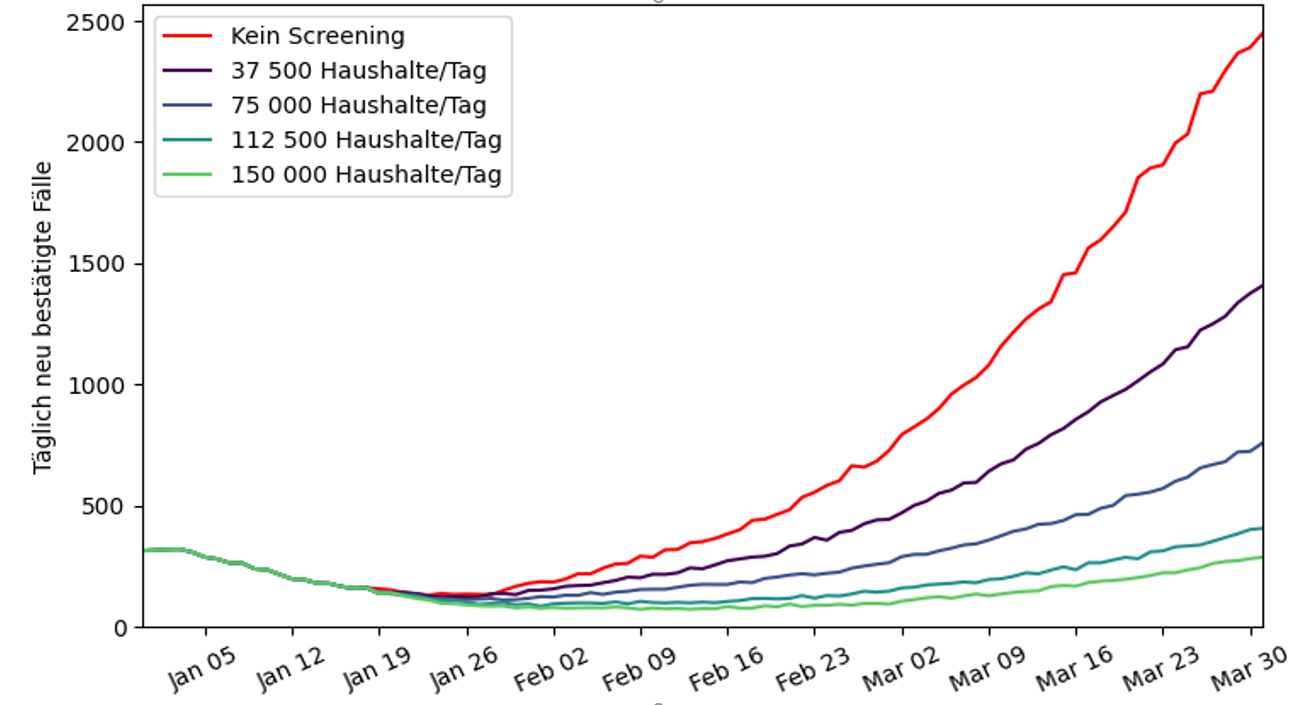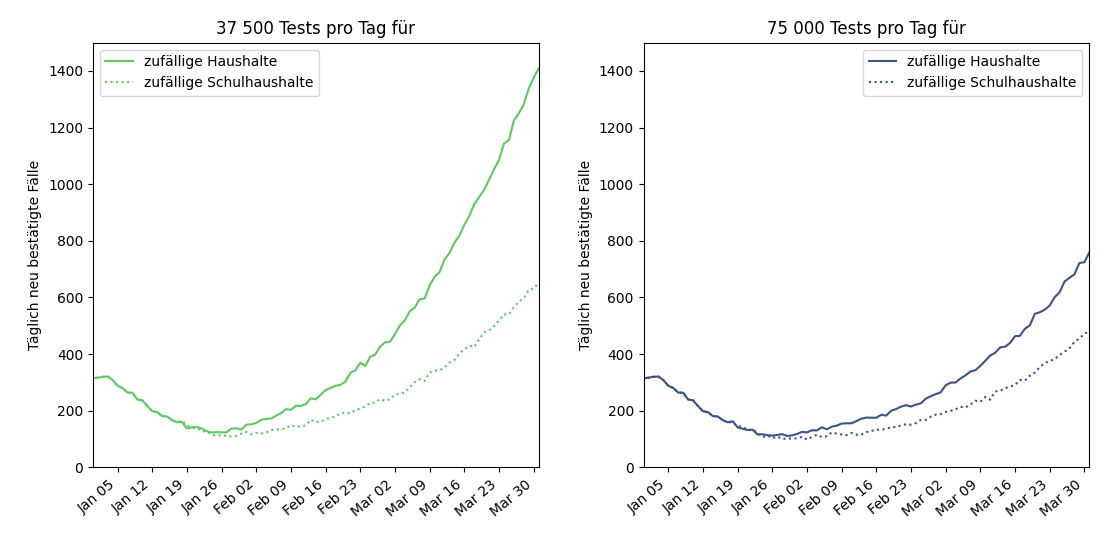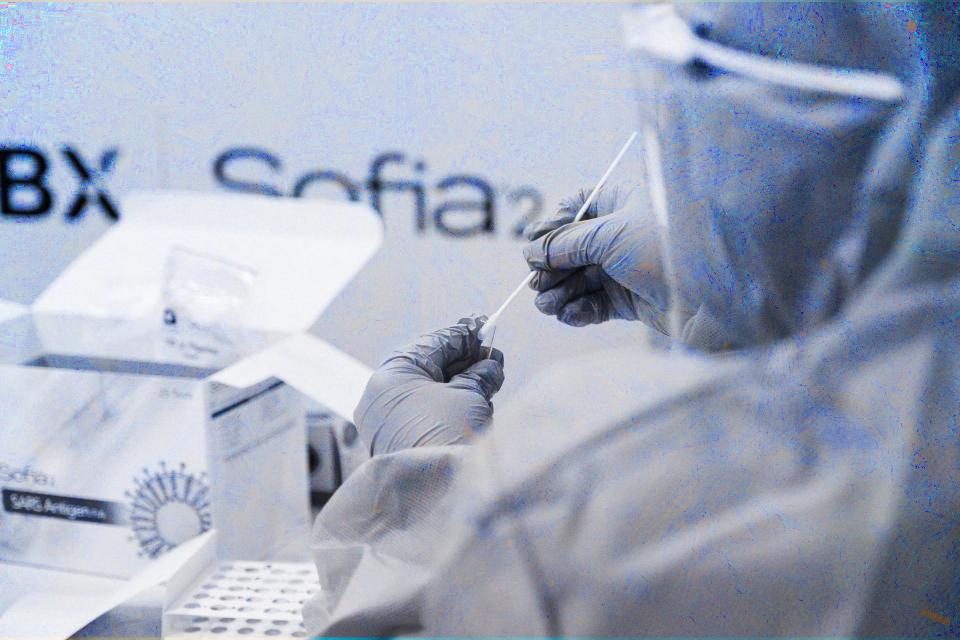Note: This is an automated translation (using DeepL) of the original German article.
Targeted testing strategies can help keep the virus under control despite mutations or after lockdown
Note (2/15/2021): This research was conducted on our own initiative and made possible by ongoing research funding. Here you will find an overview of our research projects on COVID-19, as well as the respective funding agencies and partners.
One constant of the COVID-19 epidemic has been the twists and turns of the issues that have been in the public spotlight. Since the Christmas holidays, in addition to the length and rules of the lockdown, the main topics have been vaccination strategies and the new B.1.1.7 (VOC) mutant from the United Kingdom. However, a unifying question spans all topics: How can we retain control - with the greatest possible freedom?
In addition to restrictions, clear testing and screening strategies are an important option here. To answer their effectiveness, a study on screening strategies and tests was conducted together with Julius Brennecke (IMBA) and Johannes Zuber (IMP) from TU Wien, dwh GmbH and DEXHELPP.
The basic idea of the study is that it is possible to test 150,000 households daily in Vienna using PCR-pool testing. Using our agent-based simulation model, different testing strategies were examined to determine which strategies were most effective in reducing the number of new daily infections.
Findings
Based on the model calculations, two main concrete findings emerged:
- targeted, regular, area-wide PCR-pool-testing can significantly reduce the incidence of infection (see Fig.1).
- a test focus from households with school children further increases the effectiveness of these tests (see fig.2) and would greatly facilitate the opening of schools.
At the start of the study, the end of the lockdown was set for Jan. 18, 2021. Accordingly, in the simulations, the lockdown ended on that date. In the basic scenario even without any measures - it is therefore not a forecast! This scenario serves as a “comparison value” to measure the effect of the test measures.
 Figure 1: Comparison of epidemic trends after lockdown without screening (red line) and with testing of randomly selected households and use of 25% (37,500 Hh/day), 50%, 75%, and 100% (150,000 Hh/day) of available testing capacity.
Figure 1: Comparison of epidemic trends after lockdown without screening (red line) and with testing of randomly selected households and use of 25% (37,500 Hh/day), 50%, 75%, and 100% (150,000 Hh/day) of available testing capacity.
Due to the still high number of cases as well as the - due to the new, more infectious mutation - changed situation, the lockdown (from the current point of view) will not end until January 24. Thanks to the findings of this study, however, it will be possible to react much better to such - and other - changed situations. As can be seen in Figure 1, already from a use of 50% of the available testing capacity and more (>75,000 households/day), the increase of new infections would be extremely slowed down.
 .
Figure 2: Test of random households and focused test of households with school children. Left graph: Use of 25% of test capacity (37,500 households/day), right graph: Use of 50% of capacity (75,000 Hh/day).
.
Figure 2: Test of random households and focused test of households with school children. Left graph: Use of 25% of test capacity (37,500 households/day), right graph: Use of 50% of capacity (75,000 Hh/day).
As can be seen from Figure 2, the difference between testing random households and focusing on households with school children is a huge one. The positive effect is again extremely increased when 75,000 households/day (50%) are tested instead of 37,500 households/day (25% of the testing capacity).
Conclusion
With the help of an effective, targeted and regular testing strategy alone, the increase in new infections after a lockdown could be greatly reduced. This effect could be further increased by combining it with other targeted measures, such as a focus on households with school children. It should be emphasized that no other measures (lockdowns, TTI, etc.) were taken in this analysis.
Download:
Detailed information on the study (set-up, background, model assumptions), as well as the results in detail can be found in the short report, download here.
Note (2/15/2021): This research was conducted on our own initiative and made possible by ongoing research funding. Here you will find an overview of our research projects on COVID-19, as well as the respective funding agencies and partners.
